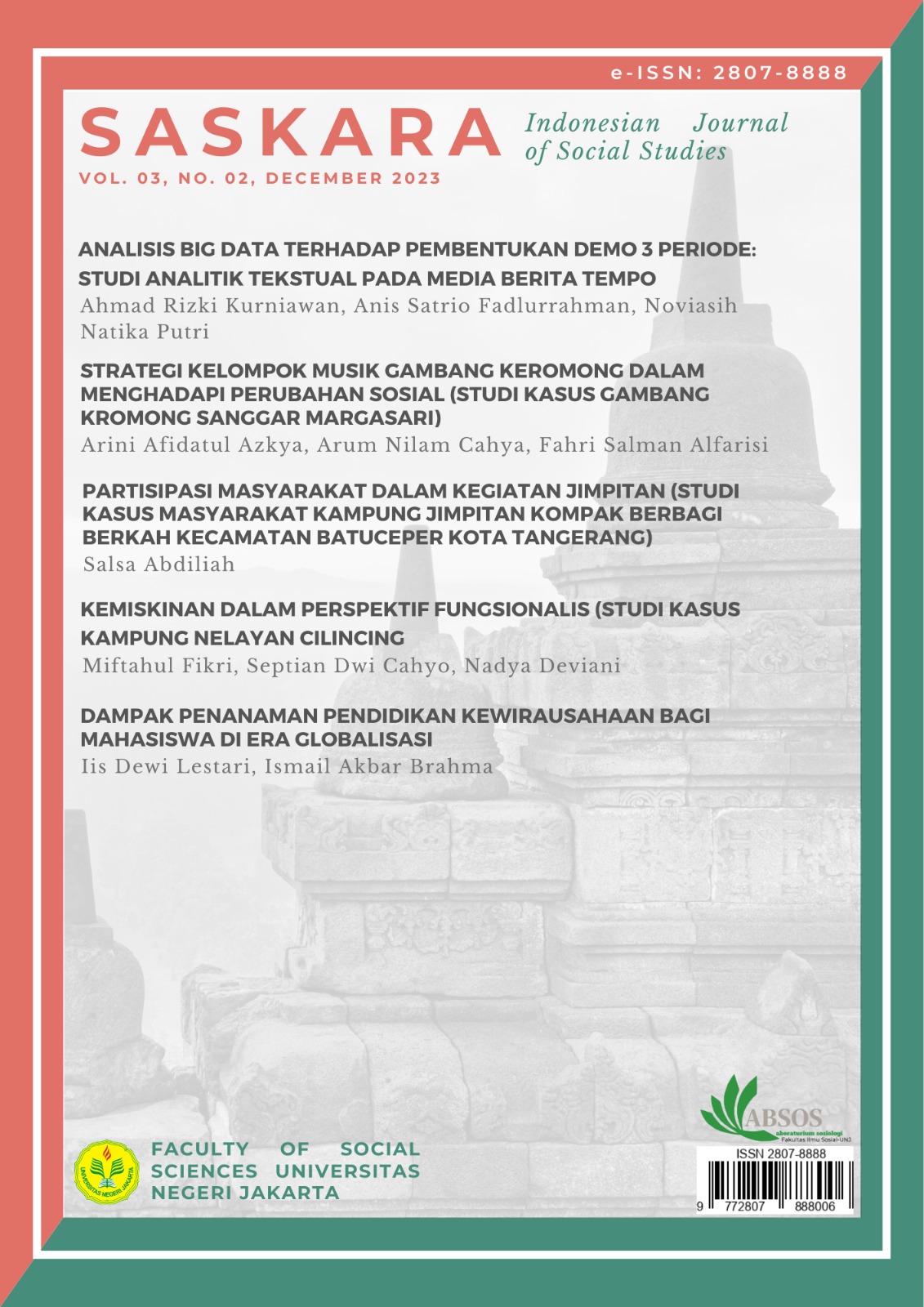Community Participation in Jimpitan Activities (Case Study: The Community of Kompak Berbagi Berkah (KB2) in the Batuceper District of Tangerang City)
DOI:
https://doi.org/10.21009/Saskara.032.03Keywords:
Society Participation, Jimpitan, Kampung Jimpitan KB 2Abstract
This study aims to describe the implementation of Jimpitan activities and determine the participation of the people of Kampung Jimpitan Kompak Berkah Berkah (KB2) in Jimpitan activities which have resulted in independence in the village. This study uses a qualitative research method with a qualitative case study approach. The results of this study indicate that there is an active role of the community starting from the process of planning, implementing, to utilizing the results of the implementation of Jimpitan in Kampung Jimpitan KB2. Community participation is also driven by internal factors, namely communal and cooperative values, religious values, and the personal motivation of each individual. While the external factors driving participation are the existence of a clear mechanism for implementing Jimpitan, the transparency of the results of Jimpitan, and the capacity and capability of the leader of Kampung Jimpitan KB2. Jimpitan as a tradition so that understanding community participation can be done using a cultural approach. The community interprets the meaning of Jimpitan's activities to build a village, then this meaning develops into three aspects, namely as a form of worship, a spirit of nationalism, and ethnic collectivity. In addition, there is a symbol that is interpreted by the community for Jimpitan's activities as a social charity system. The Jimpitan activities show progressive results towards the independence of Kampung Jimpitan KB2 in solving environmental and social problems.



6.png)
.png)
1.png)
.png
)










